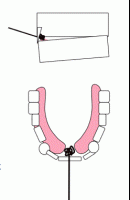Q: Do I understand your advice? […] When working on producing the ‘hissing” sounds, my focus should be on the airflow and not the correct sound production. For example, the client can’t say Ch but is able to get a lot of airflow on her attempt when probed. So I should reward her when she says Ts instead. Is this correct? My experience and research on normal development demonstrates that children learn MANNER before they learn PLACE features. Thus, stridency…
Teach the Feature First
By Pam Marshalla

